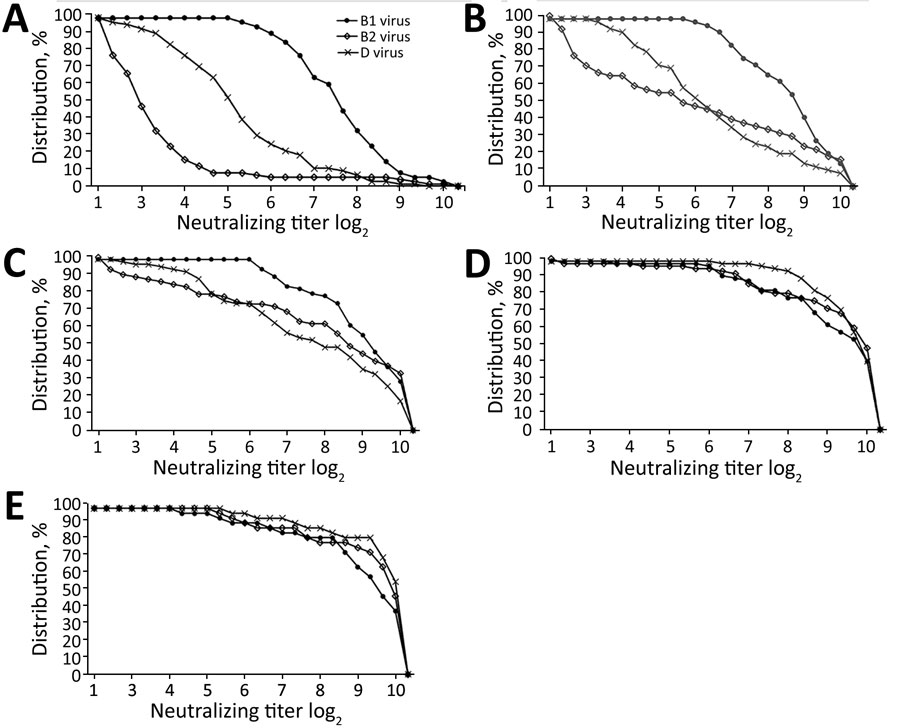Volume 28, Number 3—March 2022
CME ACTIVITY - Research
Neutralizing Enterovirus D68 Antibodies in Children after 2014 Outbreak, Kansas City, Missouri, USA
Figure

Figure. Reverse cumulative distribution (RCD) curves of enterovirus D68 (EV-D68) representing the distribution of neutralizing antibody titers against 3 EV-D68 viruses (clades B1, B2, and D) in serum samples obtained in 2017 from children <18 years of age in Kansas City, Missouri, USA, by patient age group. A) 6–35 months of age; B) 36–71 months of age; C) 72 months–10 years of age; D) 11–15 years of age; E) 16–18 years of age. A titer >3.0 log2 was considered positive for neutralizing antibodies. RCDs are curves for which each data point is the proportion of the population with a titer at least as high as the value on the x-axis. The calculated values for each area under curve (AUC) enable comparison of overall immune responses among age groups. Each panel shows 3 RCDs (1 for each virus). Panel A shows that the widest divergence of curves occurred among patients 6–35 months of age, who were born after the 2014 outbreak, suggesting less cross-neutralization among the 3 related viruses in this age group. RCDs become more convergent with each increasing age group. The largest AUCs in each age group are for the B1 predominant 2014 outbreak virus.
1All authors contributed equally to this article.